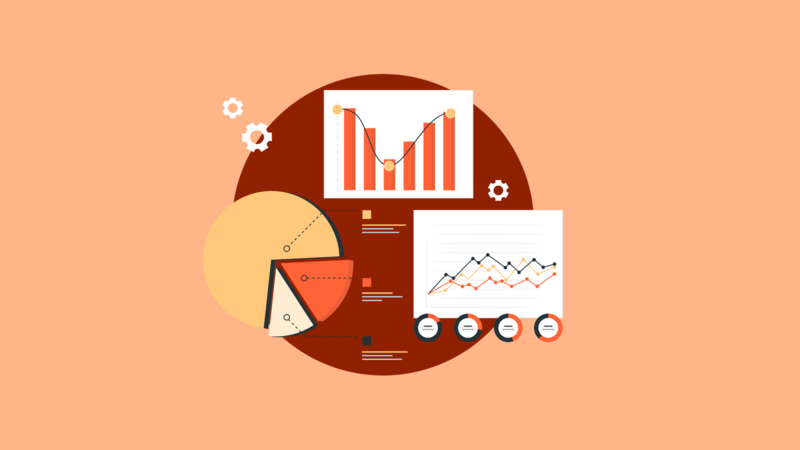In today’s digital landscape, influencer marketing has emerged as a powerful strategy for brands to connect with their target audience authentically. With the rise of social media influencers, businesses are increasingly leveraging their influence to promote products and services. However, navigating the vast world of influencer marketing requires more than just identifying popular personalities. That’s where influencer analytics tools come into play.
Introduction to Influencer Analytics Tools

Influencer analytics tools are sophisticated platforms designed to provide marketers with actionable insights into the performance of influencer marketing campaigns. These tools offer a comprehensive suite of features, allowing brands to track key metrics, measure ROI, and identify the most relevant influencers for their niche.
Understanding the performance of influencer campaigns is crucial for optimizing marketing strategies and maximizing return on investment. By harnessing the power of data, businesses can make informed decisions and drive meaningful results in their influencer marketing efforts.
Key Features of Influencer Analytics Tools
One of the primary features of influencer analytics tools is their ability to track various metrics associated with influencer marketing campaigns. These metrics include:
- Reach: The total number of unique users who have been exposed to an influencer’s content.
- Engagement: The level of interaction generated by an influencer’s posts, including likes, comments, and shares.
- Audience Demographics: Insights into the demographic profile of an influencer’s audience, including age, gender, location, and interests.
- ROI: Measurement of the return on investment generated by influencer marketing campaigns, including sales, leads, and brand awareness.
By analyzing these metrics, brands can gain a deeper understanding of the effectiveness of their influencer marketing efforts and make data-driven decisions to optimize performance.
Popular Influencer Analytics Tools
Several influencer analytics tools dominate the market, each offering unique features and capabilities. Some of the most popular tools include:
- Hootsuite: Known for its comprehensive social media management features, Hootsuite also offers influencer analytics capabilities, allowing users to track the performance of influencer campaigns across multiple platforms.
- AspireIQ: Formerly known as Revfluence, AspireIQ is a leading influencer marketing platform that provides robust analytics and campaign management tools.
- Traackr: Traackr is a powerful influencer relationship management platform that offers advanced analytics and insights to help brands identify and engage with the most relevant influencers for their campaigns.
These tools, among others, play a vital role in helping brands streamline their influencer marketing efforts and achieve measurable results.
How to Choose the Right Influencer Analytics Tool
With a plethora of options available, choosing the right influencer analytics tool can be a daunting task for marketers. Here are some factors to consider when evaluating different options:
- Features and Functionality: Assess the features offered by each tool and determine which ones align with your specific needs and objectives.
- Ease of Use: Look for a tool that is user-friendly and intuitive, allowing you to navigate and access insights effortlessly.
- Integration Capabilities: Ensure that the tool integrates seamlessly with your existing marketing stack, including social media platforms and CRM systems.
- Customer Support: Consider the level of customer support provided by the tool’s vendor, including access to training resources and technical assistance.
By carefully evaluating these factors, marketers can select the influencer analytics tool that best suits their requirements and objectives.
Integration with Social Media Platforms
Influencer analytics tools seamlessly integrate with popular social media platforms such as Instagram, Facebook, Twitter, and YouTube. This integration allows marketers to track the performance of influencer campaigns in real-time, monitor engagement metrics, and measure the impact on brand awareness and sales.
By consolidating data from multiple platforms into a centralized dashboard, these tools provide marketers with a holistic view of their influencer marketing efforts, enabling them to make data-driven decisions and optimize performance effectively.
Future Trends
As the field of influencer marketing continues to evolve, we can expect influencer analytics tools to become more sophisticated and advanced. Future trends in influencer analytics may include:
- AI-Powered Insights: The integration of artificial intelligence and machine learning algorithms to analyze influencer data and provide actionable insights.
- Predictive Analytics: The use of predictive modeling techniques to forecast the performance of influencer campaigns and optimize resource allocation.
- Cross-Channel Attribution: Enhanced capabilities for tracking the impact of influencer marketing across multiple channels and touchpoints, including offline conversions.
By staying abreast of these emerging trends, marketers can stay ahead of the curve and capitalize on the full potential of influencer marketing.
Challenges and Limitations
While influencer analytics tools offer valuable insights and capabilities, they also come with certain challenges and limitations. Some common challenges include:
- Data Accuracy: Ensuring the accuracy and reliability of influencer data can be challenging, especially when dealing with large volumes of user-generated content.
- Platform Limitations: Each social media platform has its own API limitations and restrictions, which can impact the scope and depth of influencer analytics.
- Privacy Concerns: As influencer marketing becomes more regulated, ensuring compliance with data privacy regulations such as GDPR and CCPA is essential.
Despite these challenges, influencer analytics tools remain indispensable for marketers looking to harness the power of influencer marketing effectively.
Best Practices for Maximizing ROI
To maximize return on investment from influencer marketing campaigns, consider the following best practices:
- Set Clear Objectives: Define clear and measurable objectives for your influencer marketing campaigns, whether it’s driving brand awareness, increasing sales, or generating leads.
- Identify the Right Influencers: Take the time to research and identify influencers who align with your brand values, target audience, and campaign objectives.
- Track and Measure Performance: Use influencer analytics tools to track key performance metrics and measure the impact of your campaigns accurately.
- Optimize Content and Messaging: Continuously optimize your content and messaging based on insights from influencer analytics, ensuring maximum engagement and effectiveness.
- Build Long-Term Relationships: Focus on building long-term relationships with influencers rather than one-off partnerships, fostering authenticity and trust with your audience.
By following these best practices, brands can unlock the full potential of influencer marketing and achieve sustainable growth and success.
Benefits Beyond Marketing
Influencer analytics tools offer benefits that extend beyond marketing, providing valuable insights for other areas of business as well. For example:
- Product Development: Analyzing influencer feedback and sentiment can inform product development decisions, helping brands create products that resonate with their target audience.
- Customer Relations: Understanding the preferences and behaviors of influencers’ audiences can provide valuable insights for improving customer relations and satisfaction.
By leveraging influencer analytics tools across various departments, brands can gain a holistic understanding of their target audience and market landscape, driving innovation and growth.
Cost Analysis and Pricing Models
When evaluating influencer analytics tools, it’s essential to consider the cost implications and pricing models offered by each vendor. Some common pricing models include:
- Subscription-Based: Paying a monthly or annual subscription fee for access to the platform and its features.
- Tiered Pricing: Pricing plans based on the level of functionality and usage, with higher tiers offering more advanced features and capabilities.
- Pay-Per-Use: Paying for specific features or services on a per-use basis, such as tracking a certain number of influencers or campaigns.
Before making a decision, carefully assess your budget and requirements to determine the most cost-effective option for your business.
Privacy and Data Security
In an era of increasing data privacy regulations and consumer concerns, privacy and data security are paramount considerations when using influencer analytics tools. Top tools prioritize data protection and compliance with regulations such as GDPR and CCPA, implementing robust security measures to safeguard user data.
When selecting an influencer analytics tool, look for vendors that adhere to industry best practices for data security and privacy, including encryption, access controls, and regular audits.
Conclusion
Influencer analytics tools have revolutionized the way brands approach influencer marketing, empowering marketers with actionable insights and data-driven strategies. By leveraging the power of data, brands can identify the right influencers, track campaign performance, and optimize results effectively.
As the field of influencer marketing continues to evolve, influencer analytics tools will play an increasingly critical role in driving success and delivering measurable results for businesses of all sizes and industries. By staying informed about emerging trends, best practices, and innovations in influencer analytics, marketers can stay ahead of the curve and unlock the full potential of influencer marketing.
Ready to take your influencer marketing efforts to the next level? Request a demo from AIM Technologies today and discover how our advanced influencer analytics platform can help you achieve your marketing goals.
FAQs
What are influencer analytics tools, and why are they important?
- Influencer analytics tools are platforms designed to provide marketers with insights into the performance of influencer marketing campaigns. They are important for optimizing marketing strategies and maximizing ROI.
How do influencer analytics tools help in identifying the right influencers?
- Influencer analytics tools track metrics such as reach, engagement, and audience demographics to help marketers identify influencers who align with their brand values and target audience.
What are some popular influencer analytics tools available in the market?
- Some popular influencer analytics tools include Hootsuite, AspireIQ, and Traackr, each offering unique features and capabilities for marketers.
How can brands maximize ROI from influencer marketing campaigns?
- Brands can maximize ROI from influencer marketing campaigns by setting clear objectives, identifying the right influencers, tracking performance metrics, optimizing content and messaging, and building long-term relationships with influencers.
What are the future trends in influencer analytics?
- Future trends in influencer analytics may include AI-powered insights, predictive analytics, cross-channel attribution, and more sophisticated metrics for measuring campaign performance.




